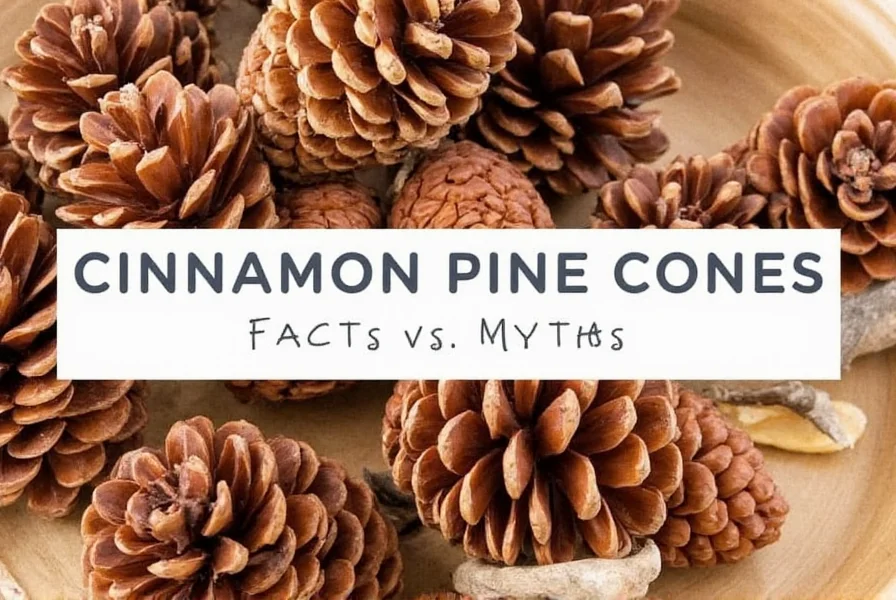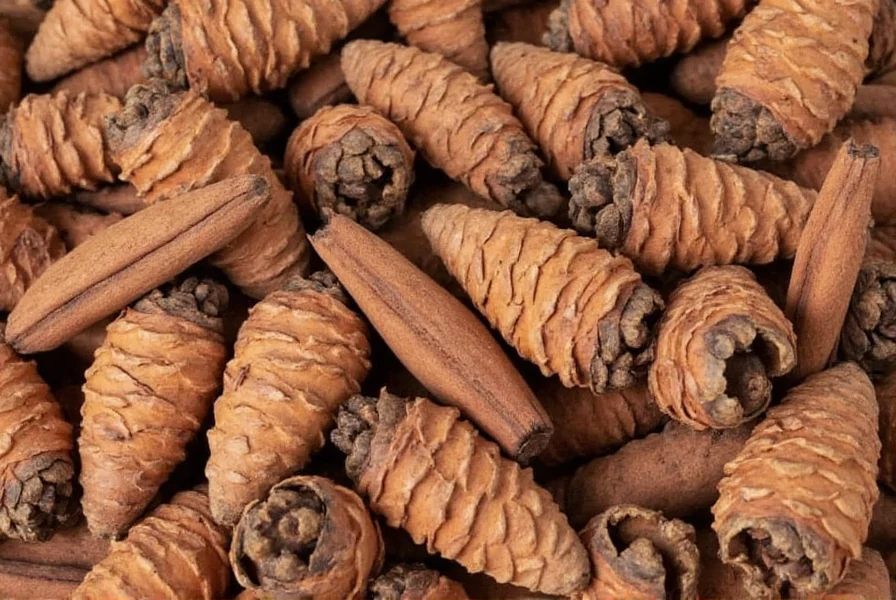When exploring the world of cinnamon pine cones, it's essential to separate botanical facts from common misconceptions. Many nature enthusiasts and crafters encounter this term while searching for aromatic decorations or trying to identify unique forest finds. Understanding what these pine cones actually are—and aren't—helps prevent confusion and enhances your appreciation of both natural and crafted botanical elements.
Botanical Reality vs. Common Misconceptions
The phrase "cinnamon pine cones" creates an immediate sensory expectation that doesn't align with botanical reality. No pine tree species produces cones that naturally smell like cinnamon. The confusion stems from two distinct phenomena:
- Natural color variation - Certain pine species produce cones with reddish-brown hues resembling ground cinnamon
- Artificial scenting - Crafters treat regular pine cones with cinnamon essential oil for holiday decorations
Eastern white pine (Pinus strobus) and some spruce varieties often produce cones with warm, cinnamon-like coloring, particularly when young. These naturally occurring color variations have led to the descriptive term "cinnamon pine cones" in gardening and nature identification circles.
Identifying Naturally Cinnamon-Colored Pine Cones
When searching for naturally occurring cinnamon-colored pine cones, focus on these identifying characteristics:
| Pine Species | Cone Characteristics | Color Development |
|---|---|---|
| Eastern White Pine | Long, slender cones (4-8 inches) | Young cones: purplish-red → Mature: light brown |
| Red Pine | Oval cones (2-4 inches) | Young cones: reddish-purple → Mature: pale brown |
| Lodgepole Pine | Small, egg-shaped cones (1-2 inches) | Young cones: purple-red → Mature: dark brown |
These color variations occur during specific growth stages and serve ecological purposes like UV protection and seed development. The warm reddish-brown tones that resemble cinnamon typically appear in immature cones before they fully mature to standard brown.
The Scented Pine Cone Craft Tradition
When people search for cinnamon scented pine cones for crafts, they're usually interested in the popular DIY decoration method. Creating these involves:
- Collecting clean, dry pine cones
- Soaking them in cinnamon oil or a cinnamon-vodka solution
- Allowing thorough drying to preserve the scent
This craft tradition became popular for holiday decorations because the combination of natural pine aroma with warm cinnamon creates an inviting seasonal fragrance. Many people mistakenly believe these scented versions represent a natural phenomenon rather than a human-created craft.
Ecological Role of Pine Cones
All pine cones, regardless of color, serve critical ecological functions. They protect developing seeds from environmental threats and predators. The resinous coating on many cones provides additional protection against insects and moisture. When conditions are right—typically after exposure to heat from forest fires—the cones open to release seeds, facilitating forest regeneration.
Understanding the natural pine cone identification guide helps distinguish between species and recognize their ecological importance beyond decorative value. The color variations that inspire terms like "cinnamon pine cones" represent nature's adaptive strategies rather than aesthetic choices.
Practical Uses for Pine Cones
Beyond their natural ecological role, pine cones have numerous practical applications:
- Natural decorations - Both plain and scented versions enhance seasonal displays
- Fire starters - Resin-rich cones make excellent kindling
- Gardening aids - Provide drainage in potted plants and deter slugs
- Wildlife support - Offer food and shelter for birds and small animals

Creating Authentic Cinnamon-Scented Pine Cones
If you're interested in how to make cinnamon pine cones for home fragrance, follow these professional recommendations:
- Collect pine cones during dry weather to prevent mold
- Bake at 200°F for 30 minutes to eliminate pests and open cones slightly
- Prepare a solution of 1 part cinnamon essential oil to 4 parts carrier oil
- Soak cones for 24 hours, then air dry in a well-ventilated area
- Store in airtight containers when not in use to preserve scent
For stronger, longer-lasting fragrance, some crafters use a mixture of cinnamon powder, cloves, and orange zest in addition to essential oils. Remember that naturally occurring pine cones will never develop this scent without human intervention.
Frequently Asked Questions
Do any pine cones naturally smell like cinnamon?
No pine cone species naturally produces a cinnamon scent. The confusion comes from artificially scented craft projects and the reddish-brown color of certain immature pine cones that resemble ground cinnamon's appearance.
Which pine trees produce cones with cinnamon-like coloring?
Eastern white pine, red pine, and lodgepole pine often produce immature cones with reddish-purple hues that can appear cinnamon-colored. These warm tones typically develop during early growth stages before maturing to standard brown.
How can I make long-lasting cinnamon-scented pine cones?
For durable cinnamon fragrance, soak cleaned pine cones in a solution of 1 part cinnamon essential oil to 4 parts carrier oil for 24 hours. Baking cones at 200°F for 30 minutes before soaking helps open the scales for better absorption. Store finished cones in airtight containers when not in use.
Are cinnamon pine cones safe for pets?
Plain pine cones are generally safe, but cinnamon-scented versions pose risks. Cinnamon essential oil can be toxic to cats and dogs if ingested. Keep scented pine cones out of reach of pets, especially during holiday seasons when they're commonly used as decorations.
Can I use cinnamon pine cones in cooking or tea?
No, pine cones—even those scented with cinnamon—are not safe for consumption. While some pine species produce edible seeds (pine nuts), the cones themselves contain resins and compounds that can cause digestive issues. Never use decorative pine cones in food preparation.











 浙公网安备
33010002000092号
浙公网安备
33010002000092号 浙B2-20120091-4
浙B2-20120091-4